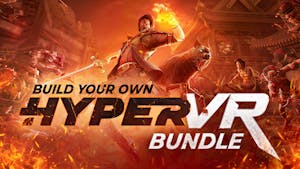Although you are on a strange moon in an alien solar system, your spacecraft seems to have been built in the final decades of the 20th century. The on-board computer provides some information and automations, but you will have to learn to fly it by the seat of your pants. Eventually, you may be able to upgrade or revise the ship's software, expand your map of Tungsten Moon, and even enter orbit around it.
Your spacecraft and lunar physics are 100% authentic. Spacecraft systems and sensors are modeled with a strict attention to detail and are faithful to the capabilities of 1980s technology. Safety margins are razor-thin, and the consequences of careless inattention come swiftly on Tungsten Moon.
FEATURES
- The simulator is designed with game controllers, flightsim joysticks, and VR in mind, yet can be played with just a keyboard and mouse.
- True open-world access to every square inch of Tungsten Moon.
- Spacecraft physics is accurate and correctly simulates the Tsiolkovsky rocket equation, fully considering the decreasing mass of the ship in flight.
- Orbital physics is modeled using RK4 Runge-Kutta fourth-order integration.
- Moon rotation, orbit around its planet, and the planet's orbit around its sun are modeled with a physically accurate timescale.
- Once the game begins, the world clock advances in real-time with every second you play. Over time, the sun sets, the planet rises, and the appearance of the sky is continually changing. Locations that are in bright sunlight at the start of the game, may be in complete darkness five hours later.
- The spacecraft onboard computer software is user-extensible using a variant of the Forth computer language, which was once a popular platform for spacecraft avionics.
Tungsten Moon 1.1.0 (and demo) brings the first significant upgrades to the FMS software (with MUCH more to come). These two new FMS menus illustrate the potential for advanced functionality in the FMS.
The PADSVC (Landing Pad Services) menu now has important information about where the pad is, and how to find neighboring pads. It also shows detailed information about what services are available to your ship (it's not just fuel any more!):

Click on the function key next to a resource to begin the transfer:

Under the new DIAG or diagnostics menu, find the L-GEAR (landing gear) diagnostic screen:

With version 1.1.0, each leg of the landing gear can sustain a variable amount of damage. The more damage you get, the easier it is to get more! Watch the damage status of your gear in real time :

And then go back to the PADSVC menu to repair the damage:

Minimum Setup
- OS: Various
- Processor: Core i5-6600K or AMD Ryzen 5 1600Memory: 4 GB RAM
- Memory: 4 GB RAM
- Graphics: A Vulkan 1.3-capable video card from NVIDIA or AMD with at least 2 GB VRAM
- Storage: 2 GB available space
Recommended Setup
- OS: Various
- Processor: Core i5-6600K or AMD Ryzen 5 1600Memory: 8 GB RAM
- Graphics: A Vulkan 1.3-capable video card from NVIDIA or AMD with at least 4 GB VRAM (e.g. GTX 1650)
- Storage: 2 GB available space
[ 6314 ]
[ 1519 ]
[ 2422 ]







































